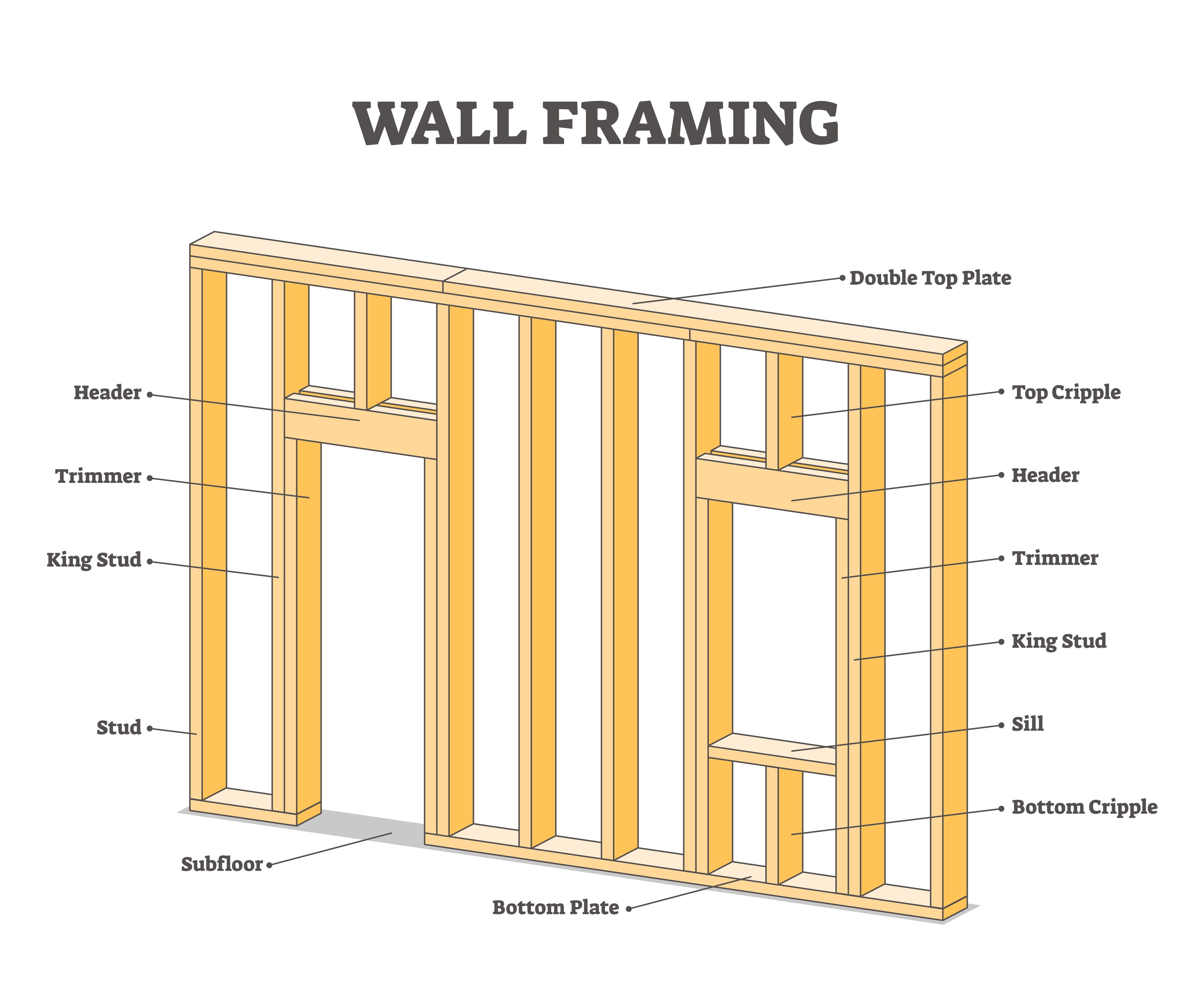How To Find Studs In A Wall Without a Stud Finder — It’s Easier Than You Think!
It's something you always want to do before hanging something heavy

You’ve heard that studs are the best place to install hardware when you’re looking to display heavy or bulky items like mirrors, TVs or art work on your walls, but have no idea just how to go about finding these important structural elements. That’s why we asked interior design pro Elizabeth P. Lord-Levitt, principal designer for Elizabeth P. Lord Residential Design, for the low-down on studs. Below, she shares why the hidden wall elements are important when it comes to décor, and the surprisingly simple ways how to find studs in a wall without using any special equipment.
What exactly are studs?

Not to be confused with handsome men or breeding horses, studs are basically large vertical beams that help make up stud walls, whether they be structural or to partition rooms. Studs can be wood or metal, but wood studs are generally used in residential applications to create the interior and exterior walls in a house.
They’re usually spaced 16″-24″ apart and serve to provide stability to stud walls.
“Studs are an integral part of the framing of a house. Knowing where they are inside the wall can assist in retrofitting electrical and plumbing, and even HVAC work. The thickness of the stud will depend on the application, if it’s an interior or exterior wall. Exterior wall studs are thicker to allow for more insulation,” says Lord-Levitt.
While most of the time we don’t need to worry about them, studs are a very important factor when it comes to certain décor pieces. “Finding a wall stud is necessary for a number of reasons, but primarily it’s needed to provide stability when hanging heavy wall decor or TV mounts,” she adds. “Finding a stud is imperative for mounting grab bars (like those found in bathrooms) to assist those who are disabled, as you need the structural stability to carry the weight of a person.” Once you find the stud. that’s what you drill into to in order to hang your heavy pieces.
This video gives a simple explanation of just stud walls and wall studs:
How do I find wood wall studs?
Whether you need to hang a TV mount, a large mirror or floating shelves, you’ll need to locate the stud to ensure the item has the support it needs. Contractors and designers use stud finders to get the job done, but you don’t have to buy the special tool to do so. If you have an electric razor, it will do the trick! Simply run the charged (or plugged in) device over the wall. When the gadget passes over a stud, its tone will change, alerting you to the appropriate spots to place the appropriate hardware to hang what you need. Note: This works best on dry wall.
Two low-techs way to locate to a stud behind drywall that can work in a pinch:
- “The most rudimentary way is to knock on the wall, and listen for hollowness versus a solid knock,” shares Lord-Levitt. “That solid knock will be a stud.”
- Take a tape measure and dimension out the horizontal distance from the side of a door or window down the wall, every 16″ “on center”, which means the distance from the center of one stud to the center of the next stud. Though Lord-Levitt says this is not ideal, as you are taking a guess as to how someone built the structure and making assumptions where a stud would live.
Need to find a metal wall stud?
“In the age of technology, a stud finder app is available to easily locate a stud behind the wall,” says Lord-Levitt. The Stud Finder app for iOS uses the magnetometer to measure the magnetic field when your phone is located near metal objects. Similarly, Stud Detector for Android makes it a breeze to find screws, nails, and metal framing studs in your walls.
















